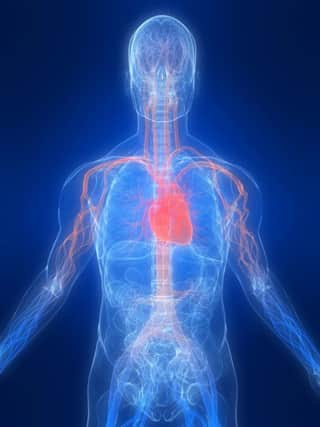Madeleine Kearns: Human/animal ethics must be defined


Adler argued that either humans or animals differed “basically in kind or basically in degree”. Adler believed it to be the former and that the latter could have grave consequences.
Fifty years later, the first successful human-pig chimera was created by the Salk Institute in California. The name ‘chimera’ originates in Greek mythology. In science it describes a single organism composed of cells from different zygotes. This research seeks to enable scientists to grow human organs for transplantation that could potentially save thousands of lives.
Advertisement
Hide AdAdvertisement
Hide AdAdult human stem cells were injected into a pig embryo and implanted into surrogate sows. Stem cells are unspecialised cells that have the potential to self-renew. The chimeric embryos/foetuses were then destroyed after one trimester.
The lead researcher, Professor Juan Carlos Izpisua Belmonte, said: “Our next challenge is to guide the human cells into forming a particular organ in pigs. The ultimate goal is to grow functional and transplantable tissue or organs.”
But this research is ethically controversial. The US in particular has a record of rigorous guidelines. In 2004, the President’s Council on Bioethics of the USA published Reproduction and Responsibility: The Regulation of New Biotechnologies whereby the council drew clear boundaries. The council objected to mixing human and non-human embryonic cells, which included the earliest stages of embryological development. It further advised that judging the moral worth of a part-human/part-animal entity would be impossible.
Elsewhere, ethical reservations toward chimeras seem to be relaxing. Last August the National Institutes of Health indicated that they might support chimera experimentation, signifying a change from the 2015 issued moratorium that prevented the Salk Institute’s research gaining federal funds.
Writing in the 1960s, many of Dr Adler’s ethical arguments were limited to the realm of the hypothetical, as science had not yet blurred many of these boundaries. Adler, correctly, predicted that his assumptions about the primacy of humankind would “not go unchallenged” and believed his argument would “be subject to critical scrutiny later, at points where it is more appropriate or feasible to do so.”
But that, precisely, is why the question matters.
Human-pig chimeras are a remarkable scientific achievement. However, science alone cannot satisfy the question of personhood and moral status.
Perhaps then, in the interest of ethics, this success should be followed by revisiting first principles, clarifying guidelines and resetting boundaries.
Madeleine Kearns is from Glasgow and is currently pursuing a Masters in Journalism at New York University. She reports on the UN and a guest writer for the Scottish Council on Human Bioethics.